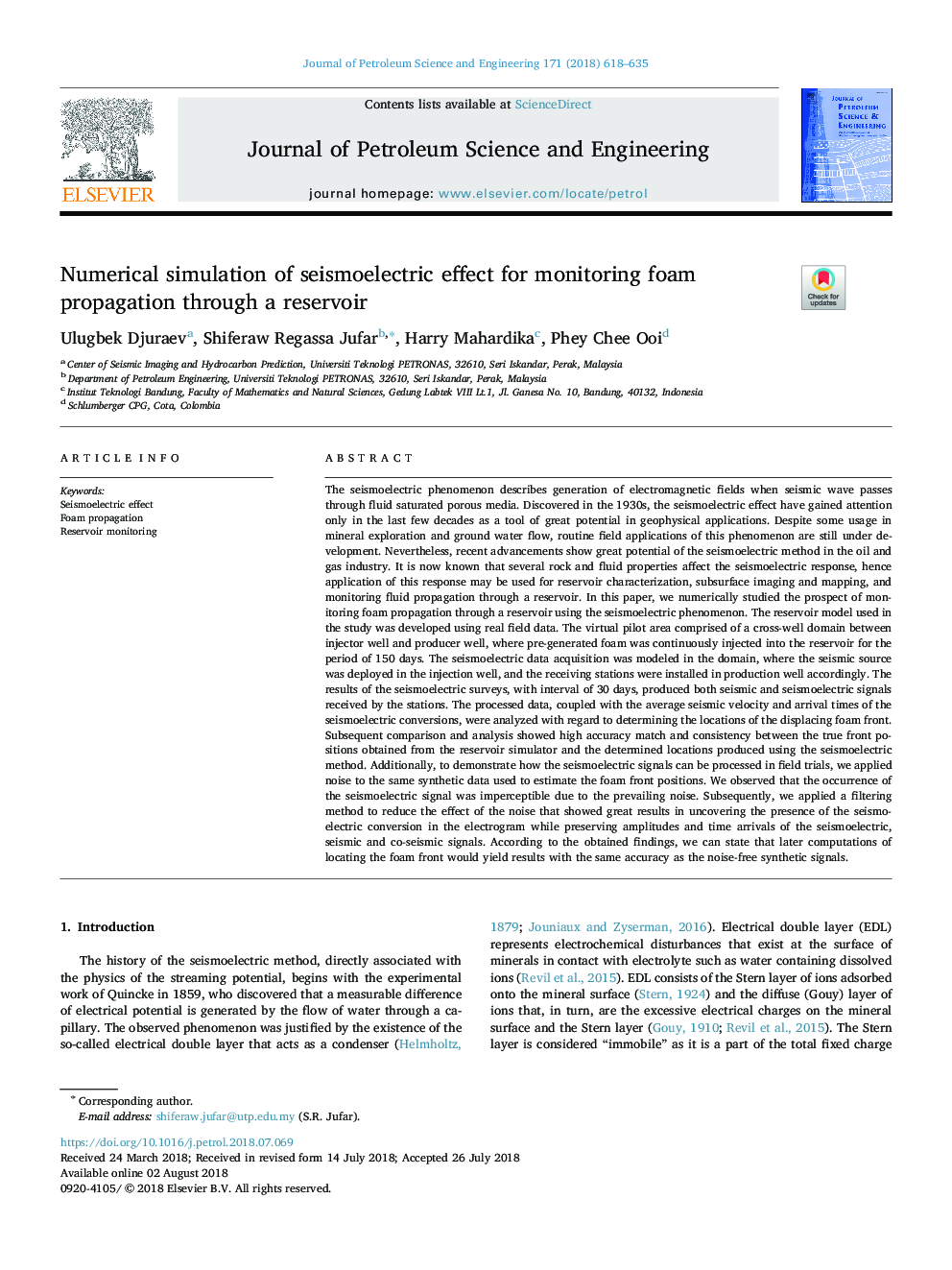| Article ID | Journal | Published Year | Pages | File Type |
|---|---|---|---|---|
| 8124343 | Journal of Petroleum Science and Engineering | 2018 | 18 Pages |
Abstract
The seismoelectric phenomenon describes generation of electromagnetic fields when seismic wave passes through fluid saturated porous media. Discovered in the 1930s, the seismoelectric effect have gained attention only in the last few decades as a tool of great potential in geophysical applications. Despite some usage in mineral exploration and ground water flow, routine field applications of this phenomenon are still under development. Nevertheless, recent advancements show great potential of the seismoelectric method in the oil and gas industry. It is now known that several rock and fluid properties affect the seismoelectric response, hence application of this response may be used for reservoir characterization, subsurface imaging and mapping, and monitoring fluid propagation through a reservoir. In this paper, we numerically studied the prospect of monitoring foam propagation through a reservoir using the seismoelectric phenomenon. The reservoir model used in the study was developed using real field data. The virtual pilot area comprised of a cross-well domain between injector well and producer well, where pre-generated foam was continuously injected into the reservoir for the period of 150 days. The seismoelectric data acquisition was modeled in the domain, where the seismic source was deployed in the injection well, and the receiving stations were installed in production well accordingly. The results of the seismoelectric surveys, with interval of 30 days, produced both seismic and seismoelectric signals received by the stations. The processed data, coupled with the average seismic velocity and arrival times of the seismoelectric conversions, were analyzed with regard to determining the locations of the displacing foam front. Subsequent comparison and analysis showed high accuracy match and consistency between the true front positions obtained from the reservoir simulator and the determined locations produced using the seismoelectric method. Additionally, to demonstrate how the seismoelectric signals can be processed in field trials, we applied noise to the same synthetic data used to estimate the foam front positions. We observed that the occurrence of the seismoelectric signal was imperceptible due to the prevailing noise. Subsequently, we applied a filtering method to reduce the effect of the noise that showed great results in uncovering the presence of the seismoelectric conversion in the electrogram while preserving amplitudes and time arrivals of the seismoelectric, seismic and co-seismic signals. According to the obtained findings, we can state that later computations of locating the foam front would yield results with the same accuracy as the noise-free synthetic signals.
Keywords
Related Topics
Physical Sciences and Engineering
Earth and Planetary Sciences
Economic Geology
Authors
Ulugbek Djuraev, Shiferaw Regassa Jufar, Harry Mahardika, Phey Chee Ooi,
